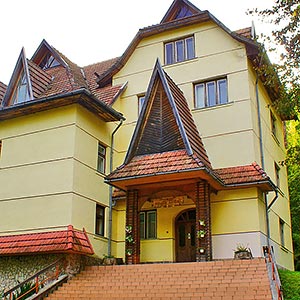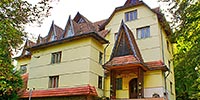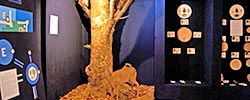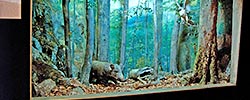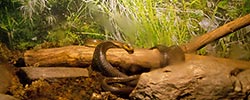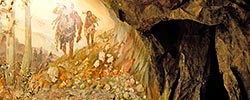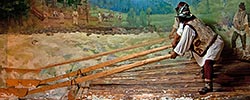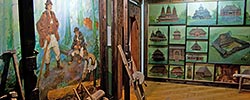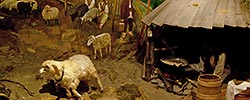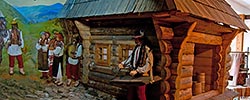The Museum of Mountain Ecology and History of Nature Management
in Ukrainian Carpathians
The museum was opened in the 90s, yet the exposition is still being formed and constantly enlarged. The author and central figure there is the director of the Carpathian Biosphere Reserve, prof. F. D. Hamor, who put most efforts in its formation as an ecological and educational institution.
The exposition takes up over a thousand m2 and consists of two main sections:
- Natural Ecosystems of the Carpathians;
- History of Nature Management in Ukrainian Carpathians.
The first section presents information about the history, geology and geomorphology of the Carpathians, main local landscape types, flora and fauna, and about mountains as a type of natural phenomenon. This section is being extended with an aqua-terranean complex with a functioning model of mountain stream, including aquatic and near aquatic inhabitants.
The second section reveals unique and original ways of natural management in the area, including animal husbandry, agriculture and forestry, which are all integral parts of cultural heritage of Ukrainian highlanders.
Lots of materials in the museum are designed to support your understanding with visual demonstration: there are dioramas, models, waxworks, panioramic pictures, information boards filled with authentic exhibits and artefacts. Among them you can see a variety of geological, paleontological, zoological and archaeological collections, items of folklife and culture, diorams 'Mountain Valley Household', 'Bokorashes' (local type of log driving), 'Karst Caves', 'The Life of a Prehistoric Man', 'Hutsul Wedding', 'Beech Primary Forests', 'The Interior of a Hutsul Home', 'Winter Carpathians', etc.
Nearby the museum (700 m far) there's a hydrological nature monument — No Name Spring (located in Piddil tract).
12:00-13:00 — lunch break.
Students — 25 UAH;
Children — 20 UAH.
Go by train or bus to Rakhiv town. The museum is located in the Central lodge of the Carpathian Biosphere Reserve in the southern suburb of the town.
More information about public transport.
By car
Go along the road Lviv-Mukachevo (H-09) from Lviv city to Rakhiv. The museum is located in the Central lodge of the Carpathian Biosphere Reserve in the southern suburb of the town.

 Ukraine
Ukraine Poland
Poland Slovakia
Slovakia
 Українською
Українською